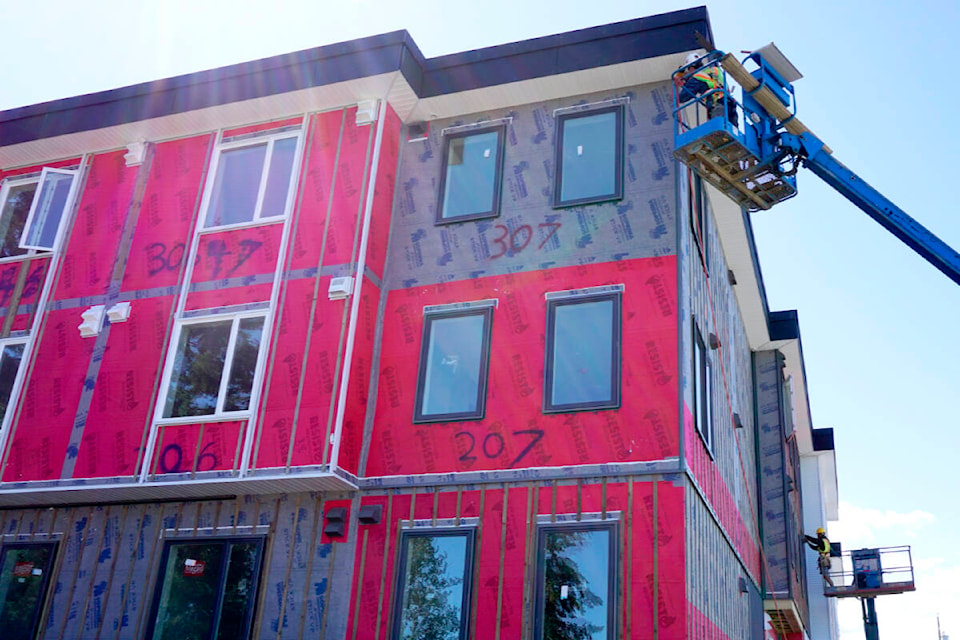The Regional District of Nanaimo is looking to establish a strategy to work toward net-zero emissions in new buildings.
The plan is a priority in the RDN’s 2019-2022 strategic plan that aims to reduce emissions to 80 per cent below 2007 levels by 2050 and also build local resilience. The RDN board endorsed the plan in 2021 and got the Town of Qualicum Beach, City of Nanaimo and District of Lantzville to be involved in 2022. The City of Parksville declined.
The RDN’s climate action technical advisory committee has been doing all the work and provided the board with an update on Feb. 13. Climate change and resilience coordinator Jessica Beaubier presented a technical report that can be used to form the basis of the strategy. The committee recommended work on the strategy continue as it considers it important in supporting the region’s climate goals.
“The goal of the work is primarily to understand how we can support new construction that is compatible with our climate targets and build local resilience,” Beaubier said.
Local governments involved in the strategy worked on ideas for accelerating uptake of net-zero buildings and localized energy generation.
“This was considered in very important context including very real issues of affordability, making progress on climate resilience, advancing equity and impacts to our more vulnerable residents, respecting industry readiness and considering potential provincial policy directions,” Beaubier said.
Policy options that were considered and discussed with the local building industry included voluntary and regulatory approaches.
“We’re really trying to understand what are the options available to us and what best suits our region,” said Beaubier. “Including options for regional harmonization to provide predictability and consistency for local industries.”
Beaubier highlighted provincial policies that are applied to new buildings only. They include B.C. energy step code, which focuses specifically on energy efficiency and net-zero buildings, and zero carbon step code, which focuses on supporting buildings that have very low greenhouse gas emissions, including near-zero emission buildings. They were introduced as a voluntary measure, said Beaubier, and local governments can make a choice on which option they prefer to adopt.
“The province intends to move all buildings towards higher levels of efficiency over time, increase every five years in level of efficiency required,” she said. “We’re aiming to reach that net-zero level by about 2032.”
At this time, she noted, the climate action committee is focusing more on net zero buildings due to budget constraints and because there is greater potential for reducing emissions. The committee reviewed the different options to gauge what the region could gain and what the risks would be.
The RDN board unanimously voted to let staff continue to complete drafting a regional strategy for net-zero buildings and localized energy generation, considering the recommendations of the technical report. As well, the board supported the scope of the draft to include actions to address emissions from building construction, and to investigate more diverse methods of supporting localized energy generation as staff capacity and resources allow. The board also directed staff to consult with industry representatives on the draft of the regional strategy.
READ MORE: Parksville, Qualicum Beach see another busy year for building permits
